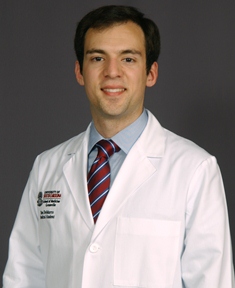Everyone who has spent significant time in the halls of a hospital knows this voice. It echoes monotonously through the halls, an Orwellian clarion demanding the attention of the busy inhabitants. For medical students on medicine or surgery call teams, ears perk up, pulses quicken, and steps hasten. A steady and clear loop, it cuts through the hustle and bustle of the floor: “Code STAT, West Tower, 4F, Code STAT, West Tower, 4F…."
For the uninitiated, code STAT indicates a patient in cardiopulmonary arrest (i.e., their heart has stopped beating normally) and the need for lifesaving medical treatment, including CPR. For medical drama fans (it’s OK to admit you binge-watched those "Grey’s Anatomy" seasons), it’s often called “code BLUE,” a familiar plot device that triggers a dramatic scene involving frantic running, people shouting “clear,” and the heroic slow-motion revival of a patient from the brink of death. While codes are tense and emotional experiences both on and off the screen, the two tell very different stories. A Wall Street Journal article, "Why Doctors Die Differently" (1), speaks to this gap:
The case of CPR is instructive. A study by Susan Diem and others of how CPR is portrayed on TV found that it was successful in 75% of the cases and that 67% of the TV patients went home. In reality, a 2010 study of more than 95,000 cases of CPR found that only 8% of patients survived for more than one month.
I was party to one such code STAT call during my internal medicine rotation that remains seared into my memory. Our team strode quickly up to the room, turning the corner to see the family clustered in the hallway, in varying states of tears and distress. One man stood apart from the circle, speaking into the room, eyes wide, his voice insistent and tinged with sorrow. “He has a living will, he wouldn’t want this,” he repeated over and over. Just inside the overcrowded room was a nurse. She stood with a syringe of epinephrine in hand, facing out toward the door, speaking emphatically but addressing no in particular amid the commotion. “He’s a full code in the chart, we have to do compressions,” she proclaimed repeatedly, pounding one gloved fist into the open palm of her other hand, each sentence popping with a plastic certainty. During the back and forth, the respiratory therapist ensured a patent airway, the upper level resident stepped to the foot of the bed to lead the team, while the interns and I began chest compressions. The health care team moved efficiently and effectively, each member operating as they had been trained for such an emergency. Each person was doing his or her job in this effort to provide lifesaving care, yet the family huddled just outside the door was distraught—what had gone wrong? A few moments after our whirlwind arrival, an attending physician arrived, spoke with the family, and compressions were stopped.
The entirety of the exchange lasted just a few minutes, but it exposed an often overlooked part of a patient’s experience in the health care system. Has anyone spoken with the patient about his or her wish for care at the end of life? Does the patient have an advanced directive or a living will? A health care proxy? Does the family understand the patient’s wishes, and is the medical team (and the documentation) on the same page? Despite Medicare’s willingness to compensate physicians for the time it takes to have conversations with patients regarding end of life care, a recent Kaiser Family Foundation poll found that, “Fewer than one in five respondents reported actually having had such a discussion with a health care provider” (2). Whether with our family members during the holidays or with our patients when they’re admitted to the hospital, these questions are imperative. It’s a conversation that can save family members from the stomach-wrenching anxiety and guilt of a code STAT that triggers the “I never asked what she wanted…” realization. It’s a moment to offer hope to the patients in the midst of a time often imbued with fear and uncertainty. We owe it to our patients to do the work of discovering who they want in the room when that calm clear voice reverberates through the halls, or if we should hear it at all.
|
Ben DeMarco |
 |
References
1. Murray K. Why doctors die differently. Wall Street Journal. 25 February 2012.
2. Span P. A quiet end to the ‘death panels’ debate. New York Times. 24 November 2015.
Back to April 2016 Issue of IMpact

